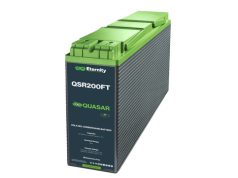In recent years, the world has witnessed a remarkable surge in the adoption of renewable energy sources, driven by increasing environmental awareness and the need to mitigate climate change. The growth of renewable energy, encompassing solar, wind, hydro, and other sustainable sources, has been nothing short of remarkable.
As we embrace these cleaner energy alternatives, it’s crucial to recognize the role that Energy Trading and Risk Management (ETRM) software plays in ensuring the efficient operation and management of renewable energy systems. In this article, we will delve into the significance of ETRM software in the context of the rapidly expanding renewable energy sector.
Renewable energy is growing at an unprecedented rate. The past decade has witnessed exponential growth in the installation of renewable energy capacity across the globe. According to the International Renewable Energy Agency (IRENA), the total global renewable energy capacity exceeded 2,800 gigawatts by 2021, and it continues to expand. This growth is driven by various factors, including decreasing costs of renewable technologies, government incentives, and the increasing urgency to reduce greenhouse gas emissions.
With the proliferation of renewable energy systems, there arises a critical need to effectively manage the complexities associated with their operation. Unlike conventional fossil fuel-based power generation, renewable energy sources are intermittent and highly dependent on weather conditions. Solar power generation, for instance, relies on the availability of sunlight, while wind turbines require favorable wind speeds. This variability introduces significant challenges in terms of energy production forecasting, resource allocation, and grid integration.
This is where ETRM software comes into play. ETRM solutions are designed to address the unique challenges faced by renewable energy producers and operators. These software systems offer a comprehensive suite of tools and functionalities that enable organizations to manage their energy portfolios, optimize trading strategies, and mitigate risks effectively.
One of the primary functions of ETRM software in the renewable energy sector is energy production forecasting. Accurate forecasting is essential for planning and scheduling energy generation, which helps ensure a stable and reliable power supply to the grid. ETRM systems leverage advanced algorithms and historical data to provide precise predictions of energy production, taking into account various factors such as weather conditions, equipment performance, and maintenance schedules. This capability allows renewable energy operators to proactively manage fluctuations in energy generation and optimize their operations accordingly.
Another critical aspect of ETRM software in the renewable energy sector is grid integration. Renewable energy systems often feed excess power into the grid when their generation exceeds on-site demand. Effective grid integration requires sophisticated monitoring and control mechanisms to ensure that the surplus energy is seamlessly integrated into the grid without causing disruptions or instability. ETRM software facilitates real-time monitoring and control of energy flows, enabling operators to manage grid interactions efficiently and comply with regulatory requirements.
Moreover, ETRM solutions offer risk management tools that are essential for the financial sustainability of renewable energy projects. The renewable energy sector is subject to various market risks, including price volatility, regulatory changes, and operational uncertainties. ETRM software provides risk assessment and mitigation capabilities, allowing organizations to hedge against adverse market movements, optimize their trading strategies, and ensure the long-term viability of their renewable energy investments.
In addition to risk management, ETRM software enhances decision-making by providing valuable insights through data analytics and reporting. These tools empower renewable energy operators with the information needed to make informed choices about energy production, trading strategies, and resource allocation. By leveraging data-driven insights, organizations can optimize their operations, reduce costs, and maximize profitability.
Furthermore, ETRM software promotes sustainability by enabling organizations to track and report on their environmental performance. As the world becomes increasingly focused on sustainability and environmental responsibility, renewable energy operators must demonstrate their commitment to reducing carbon emissions and promoting clean energy. ETRM solutions offer the means to monitor and report on key environmental metrics, ensuring compliance with regulatory requirements and enhancing transparency.
In conclusion, the growth of renewable energy systems is undeniable, and their significance in the global transition to cleaner energy sources cannot be overstated. However, to harness the full potential of renewable energy, efficient management and operation are paramount. ETRM software emerges as a crucial tool in achieving this goal. Its ability to facilitate accurate energy production forecasting, enable seamless grid integration, manage risks, provide valuable insights, and promote sustainability makes it indispensable in the renewable energy sector.
As renewable energy continues to expand and evolve, ETRM software will play an increasingly vital role in ensuring the reliability, efficiency, and profitability of renewable energy systems. With the world’s focus on addressing climate change and transitioning to a sustainable energy future, ETRM software stands as a key enabler in the journey towards a cleaner, greener, and more sustainable energy landscape.










